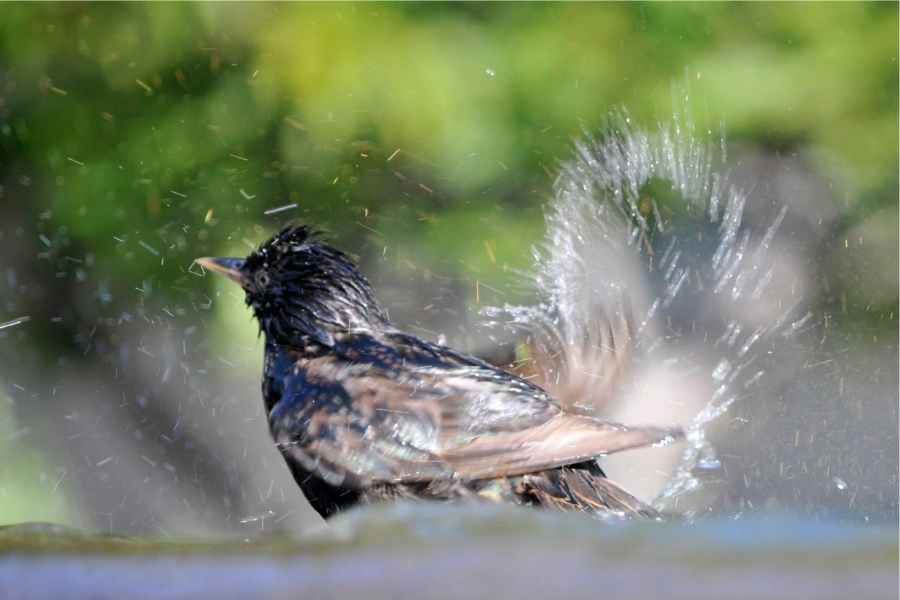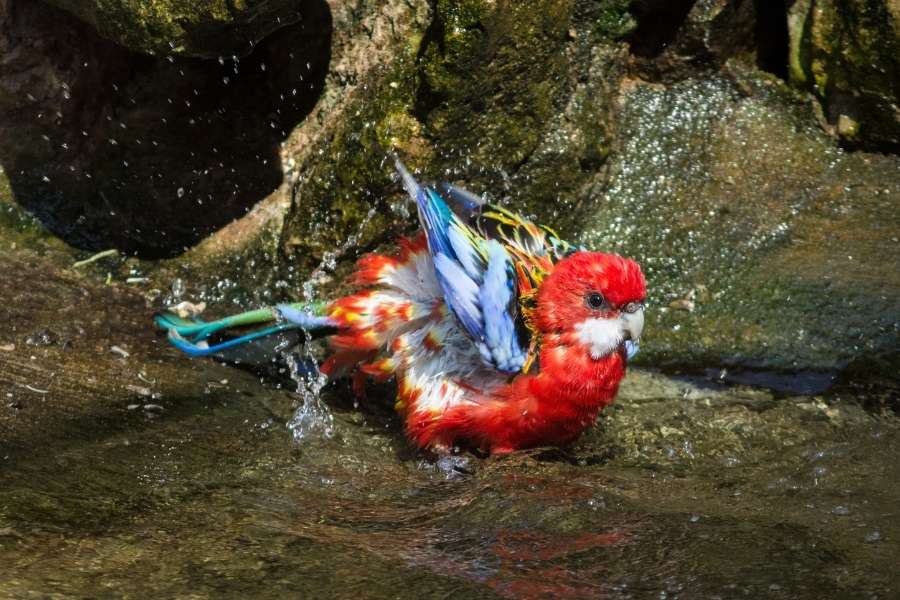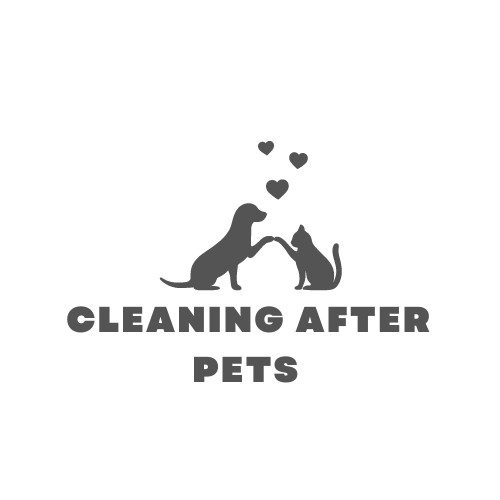Bathing is an essential part of how birds maintain healthy plumage. Bird shivering after baths is also a normal part of the process. While it might seem abnormal and something to worry about, more often than not, it is something natural.
However, if your bird needs help drying up, there are solutions such as using a pet bird heater, a heating lamp, or an appropriate dryer.
Why Is My Bird Shaking After Bathing?
It is usual for a bird to shiver a little after a bath. This shivering often occurs in their chest area, and it is by no means an indication that your bird is feeling cold. Instead, shivering or shaking is a natural and reactive process where the bird’s body is trying to generate energy by relaxing and contracting breast muscles.
It is worth noting that these movements look like quivers or shivers, but they are not. They last for a few minutes after your bird’s bath, unless the bird is sick or too advanced in age.
Either way, shaking after a bathe is normal, and what many refer to as “shivering” is a way of generating heat.
Typically, birds like to sleep a little after bathing before they wake up to preen and groom themselves and make their feathers shiny once again. For instance, cockatiels are playful birds, but even so, they go through a period of reduced physical activity while they dry.
Such behavior should not worry you.
It is usual for a bird to shiver after a bath. However, once they are dry, they will start being physically active again, playing around the cage or house and eating freely.
Most birds will return to normal behavior once they are dry and have preened themselves. They like to eat after grooming themselves.
However, old age (+15 years) and sickness can cause some birds to sleep, shiver, or remain inactive for a long time. In this case, consult your avian vet for help and dietary guidance.

What To Do If Your Bird Is Shivering After Bathing: 5 Amazing Tips To Make The Bathe Enjoyable
Making bathing sessions enjoyable for your bird is the best way to encourage your bird to take regular baths and reduce the chances and extent of your bird shivering after a bath. The tips include:
#1. Avoid Forcing Your Bird To Take Bath
It is best to let your bird bathe itself, mainly because it can do so without human intervention. In addition, birds can determine how wet they want to get and can dry themselves naturally.
Instead, look for ways to invite your bird to take a bath. For instance, when dishwashing, provide water in an appropriate dish and allow the bird to explore the opportunity to bathe.
However, make sure the water is at the proper temperature; it should be slightly warm.
#2. Determine How Your Bird Likes To Bathe
It would be best to observe your bird’s behavior to determine how they like to take a bath. For example, some birds prefer to bathe and flap their wings beneath a gentle tap water flow. In some cases, you may need to buy a birdcage washbowl or shower perches for birds to use in the shower.
Some birds do not like too much water, so consider buying a suitable handheld spray bottle. The trick to using a spray bottle is to create some “artificial rain” of a fine mist for your birds; if they like it, they will dance happily, trying to drench themselves in most of this gentle rain.
When using a spray bottle, ensure you do not spray water on their faces. Birds have tiny lungs, and the entry of a small amount of water can cause them to gasp for some time. The water needs to come out in a mist to fall gently on your bird.
When you mist water when bathing your bird, you preserve their waterproofing abilities and allow the bird to dry completely. So, look for misters with the finest mist setting suitable for small birds.
#3. Try Bathing Or Showering Together With Their Bird
Most pet birds are more comfortable being bathed by their owners or prefer showering with the pet owners. Showering with your pet bird will calm the bird’s nerves and encourage the bird to take regular baths with you.
To avoid frightening your bird, ensure that the water pressure is not too high and that the water is not directly hitting the bird. Additionally, make sure the water temperature is favorable for your bird.
Also, consider investing in a suction-cup shower perch to make it comfortable for your bird to shower with you. A suction shower perch comes in handy in such situations.
#4. Avoid Using Chemical Cleaning Products Or Soaps That Are Unsuitable For Birds
When you bathe your bird with chemical cleaning products, it ingests the harmful products when preening itself, causing undesired health issues. If you need to wash off oil stains, consider using mild dishwashing soap.
Bating your bird without any detergent will encourage healthy preening habits, which, in turn, will reduce the chances of your bird shivering after a bath.
#5. Determine When Your Bird Likes To Bathe
Most birds like to bathe in the morning to have enough time to dry throughout the day.
Other tips for stopping your bird from shivering too long include ensuring their room is warm and enclosed to stop air from getting in. Additionally, set your bird’s cage in the path of sunlight to hasten the drying process and turn off the AC to stop the temperature from rising.
Always consult an avian vet to find helpful tips for bathing your bird safely and healthily.

How Do Birds Dry Themselves?
It is a legitimate concern to wonder what birds (wild and pet) do to get dry after they get rained on or when they take a bath.
A bird dries itself through intuitive body movements to shake off extra water from its feathers and prepare to generate body heat. This quality is observed in aquatic birds also—they too must get rid of all excess water to supplement their thermal insulation abilities.
When water birds such as anhinga, cormorants, and vultures need to dry, they spread their wings to air dry them when sunbathing. On the other hand, birds like the parrot and the songbird like to shake their bodies, wings, and tails to get rid of water in their feathers.
Nonetheless, all birds usually preen themselves after getting wet or bathing. Preening helps to realign the bird’s feathers and make them shiny.
Allowing Your Bird To Dry Naturally
All wild birds naturally dry themselves (it is not like they have a choice anyway). Our pet birds can also dry naturally without needing a towel, dryer, or heater to quicken the drying process.
However, pet bird owners must provide the appropriate conditions to help the bird dry on time and discourage the bird from getting chilled. The right environment for the bird to dry naturally needs to be warm, enclosed, and, if possible, sunny and humid.
The high humidity of 40-60% is ideal for parrots and has been known to help a bird’s respiratory system, especially in the region with sinuses and nares.
For instance, if you keep your bird in an open cage, consider placing the cage in a warm, sunny, but enclosed room to help your bird dry better. Also, high humidity is healthy for a bird’s respiratory system.
The area around the sinuses and nares, in particular. Low humidity dries your bird’s sinuses and can cause your bird’s head to shake.
One of the main benefits of allowing your bird to dry naturally is that it preserves the bird’s waterproofing abilities. Also, the bird gets a chance to preen and groom itself the natural way and the way it likes, ensuring every feather is in its rightful place.
Most birds love to sleep while they dry—this is why pet bird owners need to provide ideal conditions to make the bird as comfortable as possible. Your budgie may be shaking after a bathe because you left the window open, and the cold air coming in makes them cold.
Should I Dry My Bird After A Bath?
Many people wonder if they should dry the bird to speed up the drying process.
Ideally, pet bird owners should not dry their birds using towels, heat lamps, dryers, or other artificial equipment. As previously mentioned, birds have an innate ability to dry themselves after a bath.
Additionally, using a towel to dry your bird upsets their waterproofing abilities and disrupts how the feathers are aligned.
A bird’s feathers are covered with water-resistant oil to limit how wet the bird becomes when bathing or in the rain. This oil is produced by the uropygial gland (preen/oil gland) located on the bird’s rear end and above the tail. The bird spreads this oil all over its feathers during preening.
Unfortunately, rubbing a towel on your bird’s feathers reduces the bird’s waterproofing characteristics. However, not all birds produce this oil; amazon parrots and hyacinth macaws do not have the uropygial gland.
Research shows that this oil helps preserve the bird’s feathers in the proper position and condition. The bird must align its feathers at a particular angle and tightness to allow the bird to resist getting excessively wet. Using a towel to dry your bird will discourage it from taking frequent baths.
Remember, wild birds bathe often and do not have any towels to dry them, yet most lead a free and healthy life.
How To Dry Your Bird After A Bath
As much as your bird can dry naturally, some circumstances may require the pet bird owner to accelerate the drying process, especially when the bird is shaking excessively or for too long after a bathe because of chilly weather conditions.
If you live in a cold location, you may need to help your birds dry faster to ensure they do not get sick or chilled. Cold or drafty conditions can slow down the drying process and cause your bird to shake after a bath.
You may use the following methods:
Using A Pet Bird Heater Or Bird Heating Lamp
The best option if you want to dry your pet bird is to use a heater such as the K&H Snuggle-Up Bird Warmer. Place the heater near or even inside your bird’s cage to provide warmth to your bird, especially when it is cold.
You may also put a heat lamp such as the Zoo Med Labs Aviansun Deluxe Floor Lamp inside the cage to help your bird dry faster. Look for a suitable heat lamp for your bird — a lamp that can be linked to your bird’s cage to speed up the drying process.
Using A Hair Dryer
The dryer must be used with a lot of caution to avoid burning your bird’s delicate skin. To avoid burning your bird, ensure you use a low heat setting (or the “cool” setting) and maintain a safe distance between the bird and the dryer.
Too much heat can dry your bird’s skin, causing the bird to feel itchy. Consequently, the bird will start to pluck its feathers and skin, causing self-harm. The same case applies when you use a blow dryer on your pet birds for too long.
Also, use a suitable dryer such as the IONE Professional Double Force Grooming Blower Dryer, and avoid dryers with non-stick coating on their heating coils, which can release toxic fumes harmful to your bird.
Ensure you do not scare your bird with the dryer by blowing air directly into your bird’s face. Additionally, you can redirect the warm air from the blow dryer to your bird with your hands to dissipate the heat.
Using A Towel
Pet bird owners should avoid using a towel to dry their bird because it undermines the bird’s waterproofing abilities and wrongly readjusts the position and structure of their feathers.
Towels are not the best for speeding up your bird’s drying process after a bath. Towels can often wound a bird, especially if it is a parrot. If you must use the towel, use it gently to avoid hurting the bird. Alternatively, you may use paper towels to get rid of water left on the bird’s head and below the wings.
How Long Does It Take For A Bird To Dry?
In other words, how long will bird shiver after a bath? There is no definite time needed for a bird to dry. The time a bird needs to dry completely depends on a host of factors, such as the weather, how soaked the bird got during the bath, and the air temperature in the room.
Nonetheless, avoid drenching your bird’s feathers entirely, as this may cause the bird to lose excess body heat and alter its physical behavior completely.
How Often Should You Give A Bird A Bath?
The simple answer is that it depends on your bird’s personality and preferences. Bathing pet birds is essential but not a prerequisite for life since there are birds that do not like taking baths at all.
For instance, birds not adapted to wading, such as the woodpecker and the nuthatch, will rarely bathe and only spread their wings to receive slight rain.
You have to study your pet bird’s everyday behavior to determine if they like regular baths. For instance, do you see them dipping into their drinking water many times during the day? This could indicate they love taking regular baths.
According to vets, pet birds need to be bathed daily, especially if they live in homes with dry air; dry air from an air conditioning unit is not favorable to feathery birds.
In cold regions, pet bird owners can bathe their birds once a week, which might be enough to keep your bird’s skin and feathers clean and healthy.
The bottom line is that birds need to get wet regularly to maintain healthy skin and feathers. This means maintaining cleanliness is a crucial cog in caring for pet birds. When we do not bathe our birds regularly, they fall sick or begin to pull out their beautiful feathers. After the feathers gather dirt, the skin becomes dry and itchy.
Also, bathing your pet bird might prevent it from bathing itself in dirty water.
Read More About How Often Do Birds Need To Bathe

